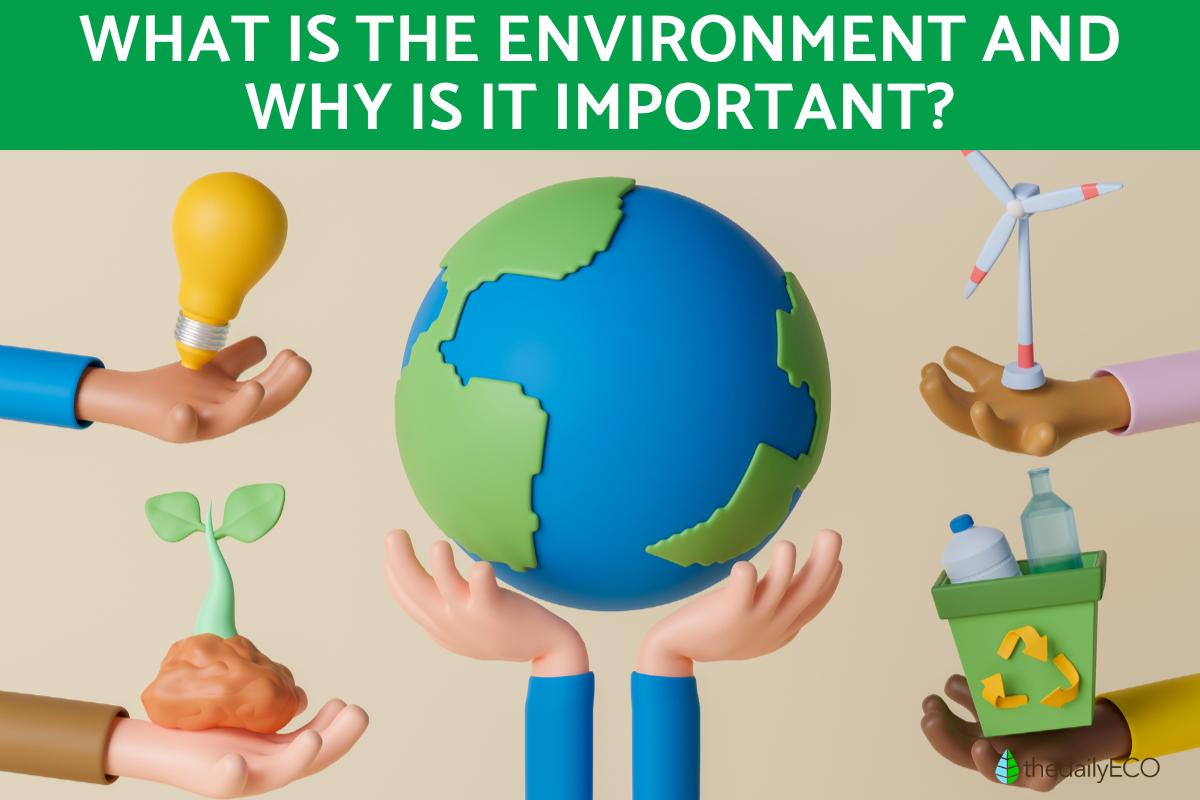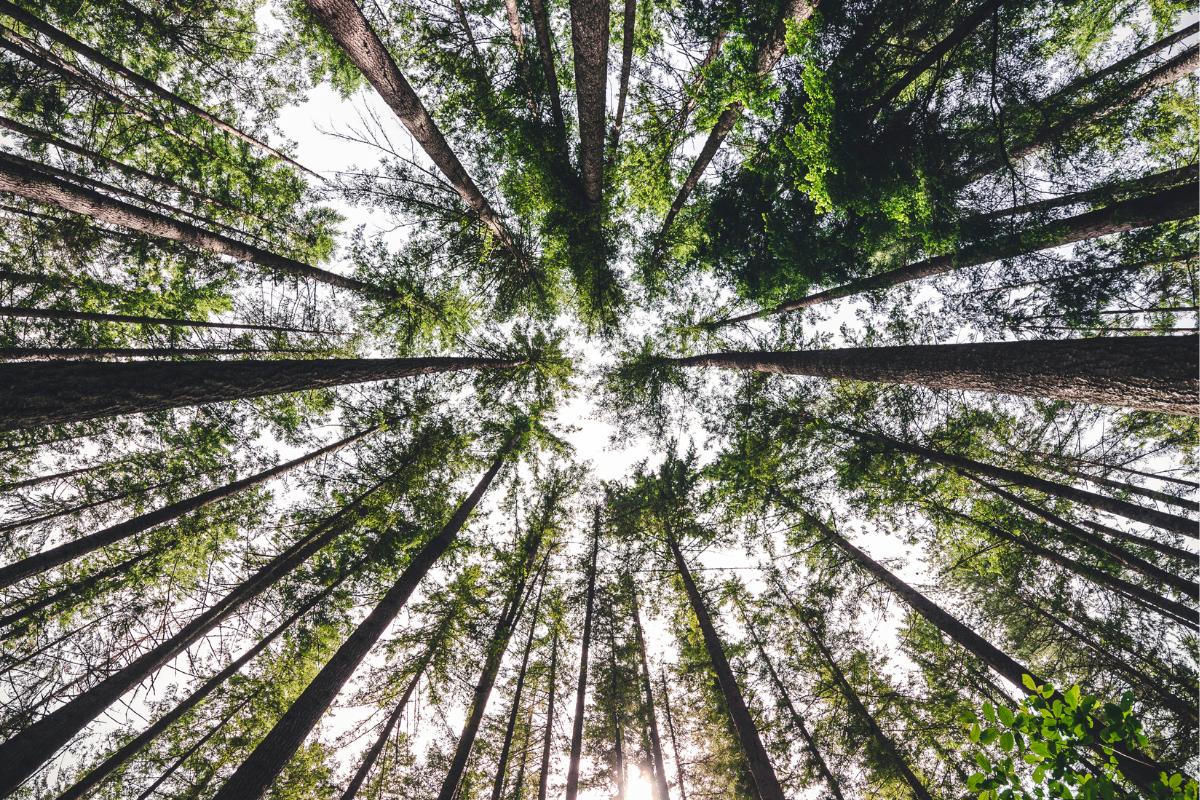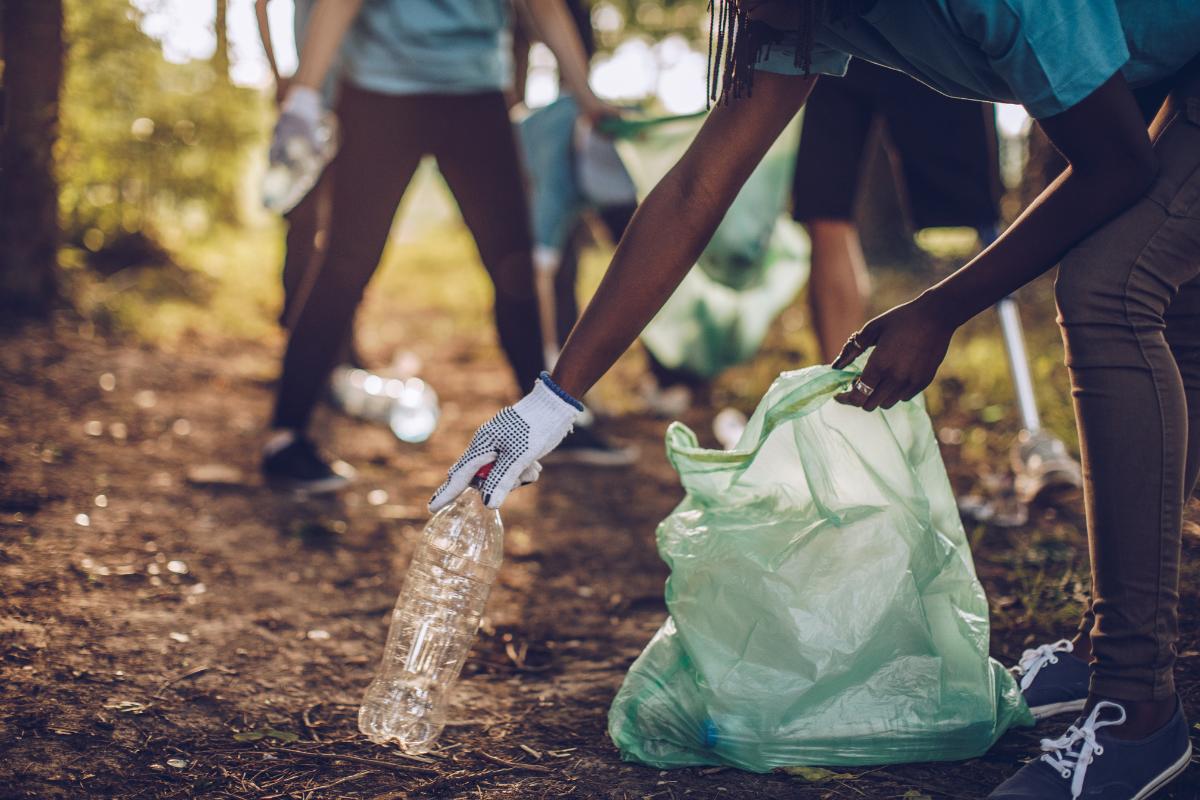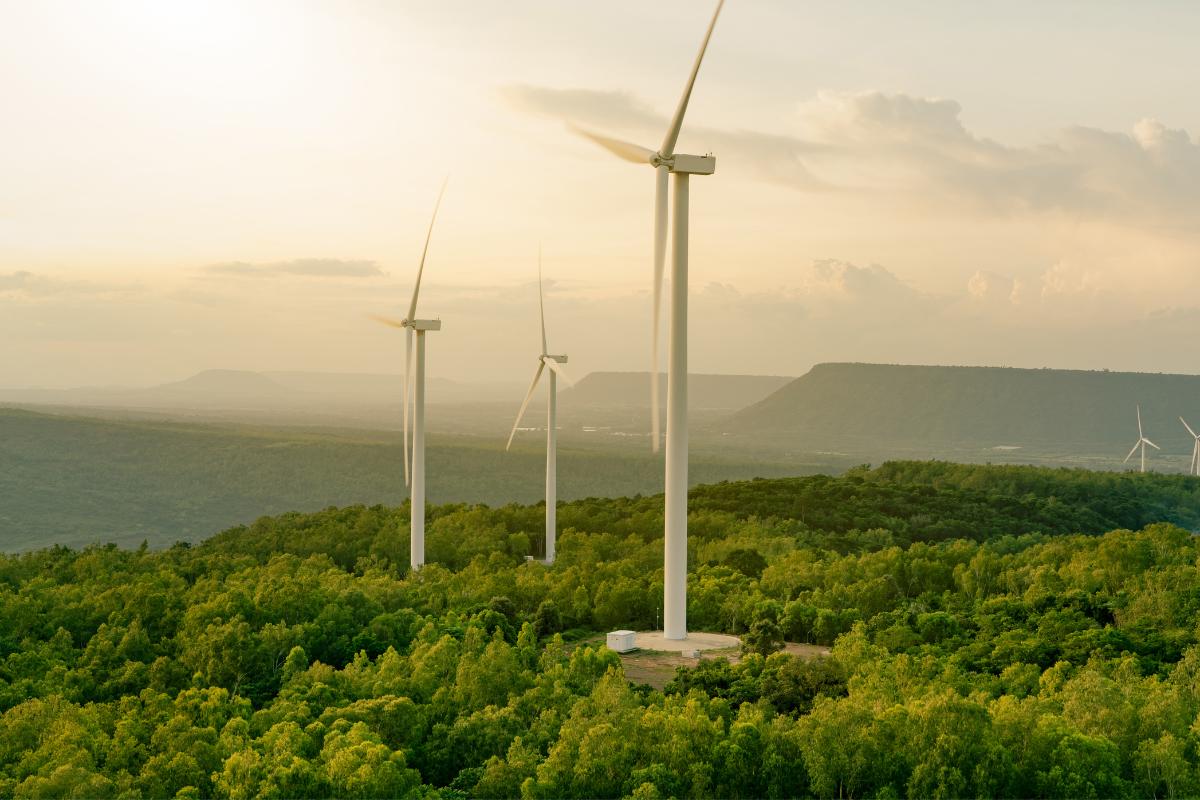What Is the Environment and Why Is It Important?


The environment encompasses all the living and non-living things around us, forming the natural world that supports life on Earth. It includes everything from the air we breathe and the water we drink to the forests, oceans, and countless ecosystems that maintain the planet's balance. Each part of the environment, from the smallest insect to the largest forest, plays a unique role in sustaining biodiversity, regulating climate, and providing resources essential for human survival.
In this article from thedailyECO, we explore what the environment is, its key components, how human activity impacts its balance, and what actions we can take to protect it.
What is the environment?
The environment encompasses all the chemical, physical, and biological elements that living beings interact with. Is a complex system that includes both natural and artificial elements. While natural elements like air, water, soil, and living organisms form the foundation, human activities have led to the creation of artificial elements such as buildings, roads, and industrial products.
For humans, the environment is not just the physical space we inhabit. It also encompasses the cultural and social factors that shape our experiences, beliefs, and behaviors. These intangible aspects, like traditions, customs, values, and social norms, are just as much a part of our environment as the physical world around us.
This interconnectedness between natural and human-made elements means that our actions have a significant impact on the environment. For example, deforestation, pollution, and climate change are all consequences of human activities that disrupt the delicate balance of the natural world.
Conversely, the environment also shapes our way of life. Natural resources like water and minerals are essential for our survival and well-being. The climate and geography of a region influence our culture, economy, and daily lives.
Therefore, it's crucial to recognize that the environment is a dynamic system where humans and nature are intertwined. By understanding this relationship, we can make informed decisions to protect and preserve our planet for future generations.
Wood might seem endless, but it’s far from it. Discover why conserving it is key in this other article.

Components of the Environment
As mentioned earlier, the environment consists of various components that can be broadly categorized into physical and biological elements. Understanding these components is essential for appreciating the complexity of our surroundings and the interactions that occur within them.
Physical components
- Air and atmosphere: the atmosphere is the layer of gases surrounding the Earth, vital for sustaining life. It provides oxygen for breathing, protects us from harmful solar radiation, and helps regulate temperature. The composition of the atmosphere influences weather patterns and climatic conditions, making it essential for all living organisms.
- Water bodies: water is a fundamental component of the environment, existing in various forms such as oceans, rivers, lakes, and groundwater. These water bodies support aquatic life, facilitate transportation, and play a crucial role in the water cycle. Freshwater sources are especially important for drinking water and agriculture, providing essential resources for both humans and ecosystems.
- Land and soil: land encompasses all terrestrial surfaces, including mountains, plains, and valleys. Soil is a critical component that supports plant growth and sustains terrestrial ecosystems. Healthy soil contains nutrients, organic matter, and microorganisms that contribute to its fertility. The type of land and soil influences the kinds of vegetation and animal species that can thrive in an area.
- Climate and weather: climate refers to the long-term patterns of temperature, humidity, wind, and precipitation in a particular region, while weather describes short-term atmospheric conditions. Both climate and weather significantly impact ecosystems, influencing the types of plants and animals that can inhabit specific areas. Changes in climate can lead to shifts in biodiversity and the health of ecosystems.
Biological components
- Plants and vegetation: plants are essential to life on Earth. They produce oxygen through photosynthesis and serve as the base of most food chains. Vegetation varies widely, from dense forests to arid deserts, and is influenced by climate, soil, and geographical factors. Biodiversity in plant life contributes to ecosystem stability and resilience.
- Animals: animal life, or fauna, includes a vast range of species that interact with their environment. Animals play crucial roles in ecosystems as pollinators, predators, and scavengers. Their behaviors and populations are closely tied to the availability of food, water, and shelter.
- Microorganisms: microorganisms, including bacteria and fungi, are often overlooked but are vital to ecological processes. They decompose organic matter, recycle nutrients, and help maintain soil health. Microorganisms also play essential roles in various biogeochemical cycles, such as the nitrogen and carbon cycles.
- Humans: humans significantly impact the environment through activities like agriculture, urbanization, and industry. As a biological component, our ability to modify the environment sets us apart.
It's important to highlight the interconnectivity of these components. For instance, climate influences vegetation, which in turn affects animal populations and soil quality. Curious about what’s happening beneath our feet? Learn how soil pollution affects us all.

Human Interaction with the environment
As mentioned before, human activities, influenced by cultural values and technological advancements, can disrupt these natural systems, leading to environmental issues like climate change, pollution, and biodiversity loss.
Humans depend on a variety of natural resources to sustain their daily lives and drive development. Renewable resources, such as solar, wind, and water energy, can be replenished naturally or are constantly available, offering sustainable options for energy and materials when managed responsibly. In contrast, non-renewable resources, including fossil fuels, minerals, and metals, are finite and deplete with continued use.
Overreliance on these resources can strain the environment and limit future availability. This is why, sustainable resource management is crucial, involving careful planning, balanced consumption, and a shift towards renewable alternatives to minimize ecological impact.
The environment faces numerous challenges that threaten ecosystems and human health. These include:
- Climate change: driven by greenhouse gas emissions, is causing global temperatures to rise, leading to extreme weather events, rising sea levels, and disrupted ecosystems.
- Pollution: from air and water contamination to plastic waste, affects all aspects of the environment, harming wildlife and human health.
- Deforestation: the clearing of forests, reduces carbon storage, disrupts biodiversity, and erodes soil.
- Biodiversity loss: resulting from habitat destruction, pollution, and overexploitation, threatens species and the ecosystem services they provide.
- Resource depletion: including water scarcity and declining fish stocks, limits access to essential resources, jeopardizing food security and economic stability.
Did you know everyday choices can have multiple environmental effects? Learn more about this in our next article.
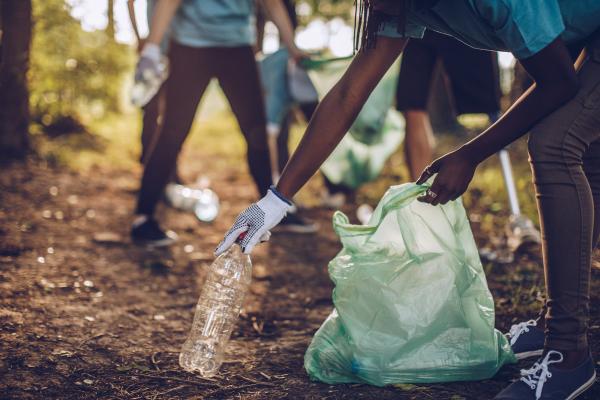
How to take care of the environment
Environmental protection aims to preserve ecosystems and minimize human impact on the environment. Key strategies include adopting sustainable practices like using renewable energy sources and reducing resource consumption.
Effective resource management is essential, involving responsible extraction, conservation efforts, and promoting the regeneration of natural resources. Establishing protected areas, such as national parks, provides safe havens for wildlife and helps maintain natural habitats. By implementing these measures, we can safeguard the environment and ensure a sustainable future for generations to come.
You can support environmental protection with simple individual actions. Here are some ways you can help:
- Reduce your carbon footprint: walk, bike, or use public transport instead of driving. Choose energy-efficient appliances, turn off lights, and reduce heating and cooling use at home.
- Manage waste: recycle paper, glass, and plastics. Compost organic waste to reduce landfill use. Avoid single-use plastics, and bring reusable bags, bottles, and containers.
- Conserve resources: save water by taking shorter showers and fixing leaks. Use only what you need and avoid wasting food and other resources.
- Support sustainable products: choose products made from renewable or recycled materials, and support companies with sustainable practices.
- Protect natural spaces: respect local wildlife and natural areas. Avoid disturbing ecosystems, and participate in local clean-ups or conservation projects.
Want to see how nature can thrive in cities? Discover the advantages of urban greenery.
Why is the environment important for us?
The environment is the lifeblood of our planet, providing essential resources like water, air, and food that sustain all living organisms. It's the foundation upon which life thrives, from the smallest microbe to the largest mammal.
Human civilization depends entirely on the environment. We rely on it for the raw materials to build our homes, power our industries, and feed our populations. The air we breathe, the water we drink, and the food we eat all originate from the natural world.
However, our increasing reliance on the environment has led to significant challenges. Certain human activities threaten the delicate balance of ecosystems and endanger the future of our planet. This is why protecting the environment is not just about preserving nature, but about ensuring the long-term survival of humanity.
Wondering how trees contribute to a healthier planet? Discover their vital role in our ecosystem.

If you want to read similar articles to What Is the Environment and Why Is It Important?, we recommend you visit our Environment (other) category.





